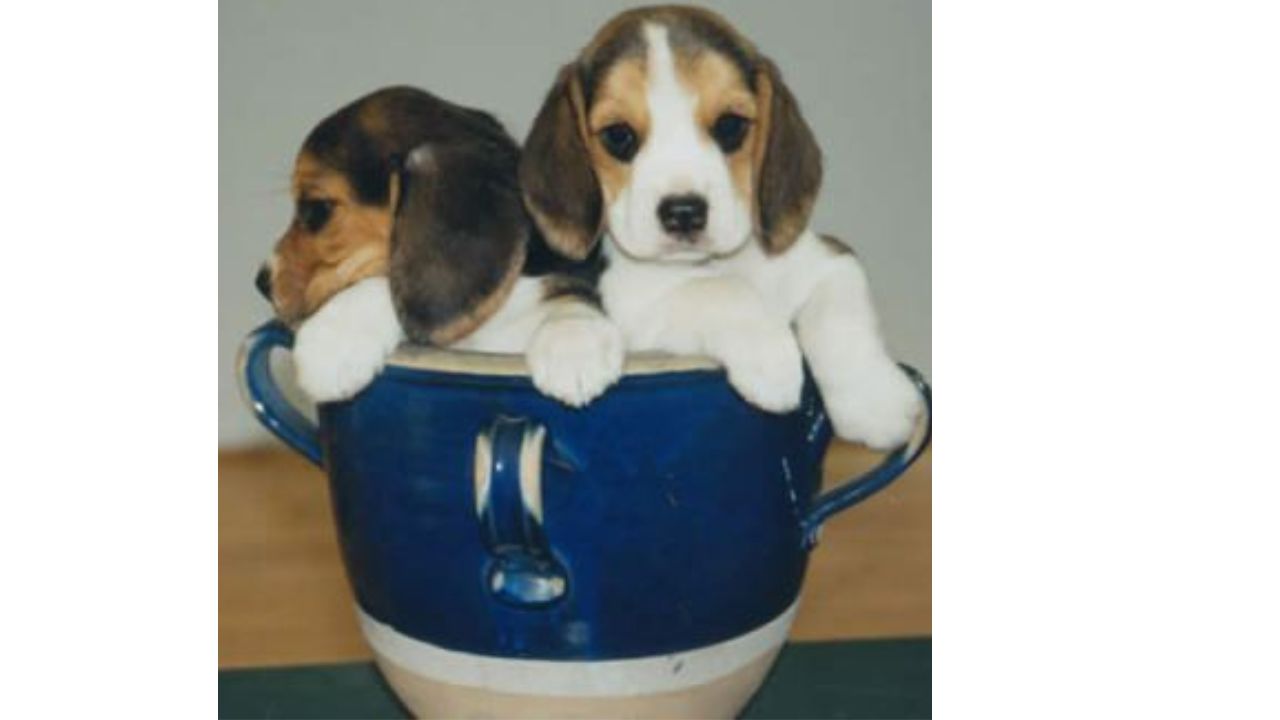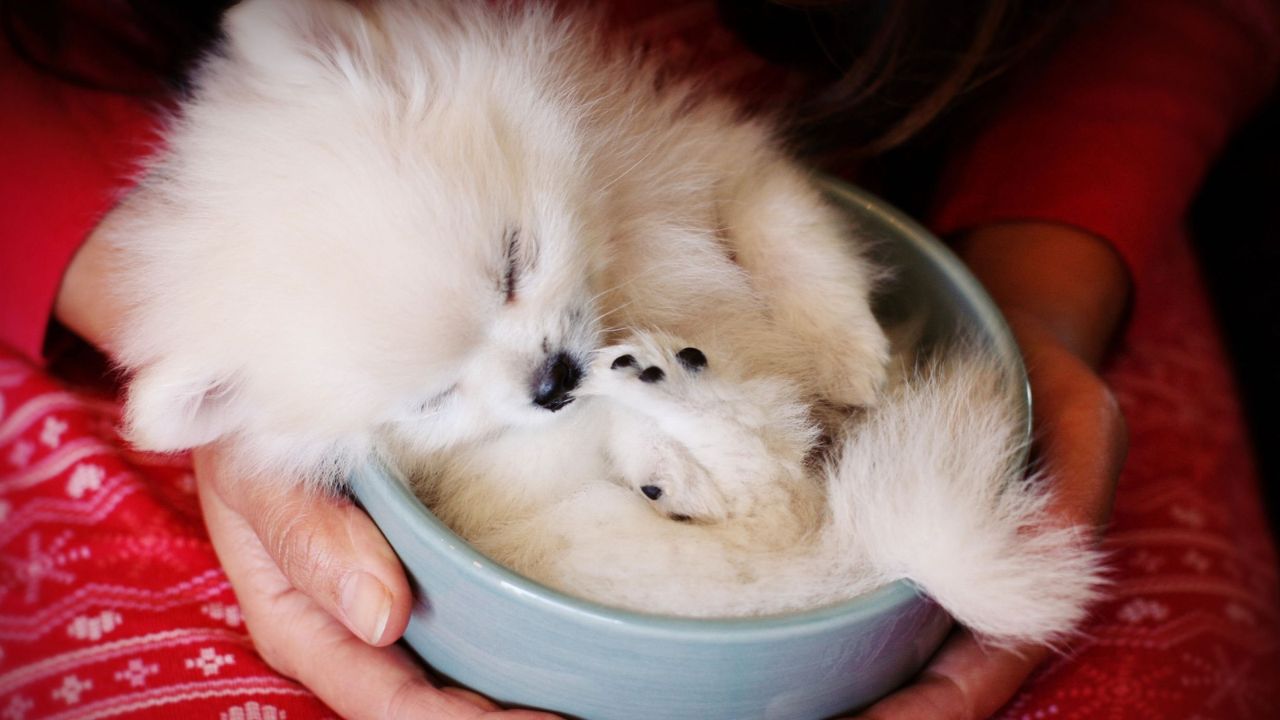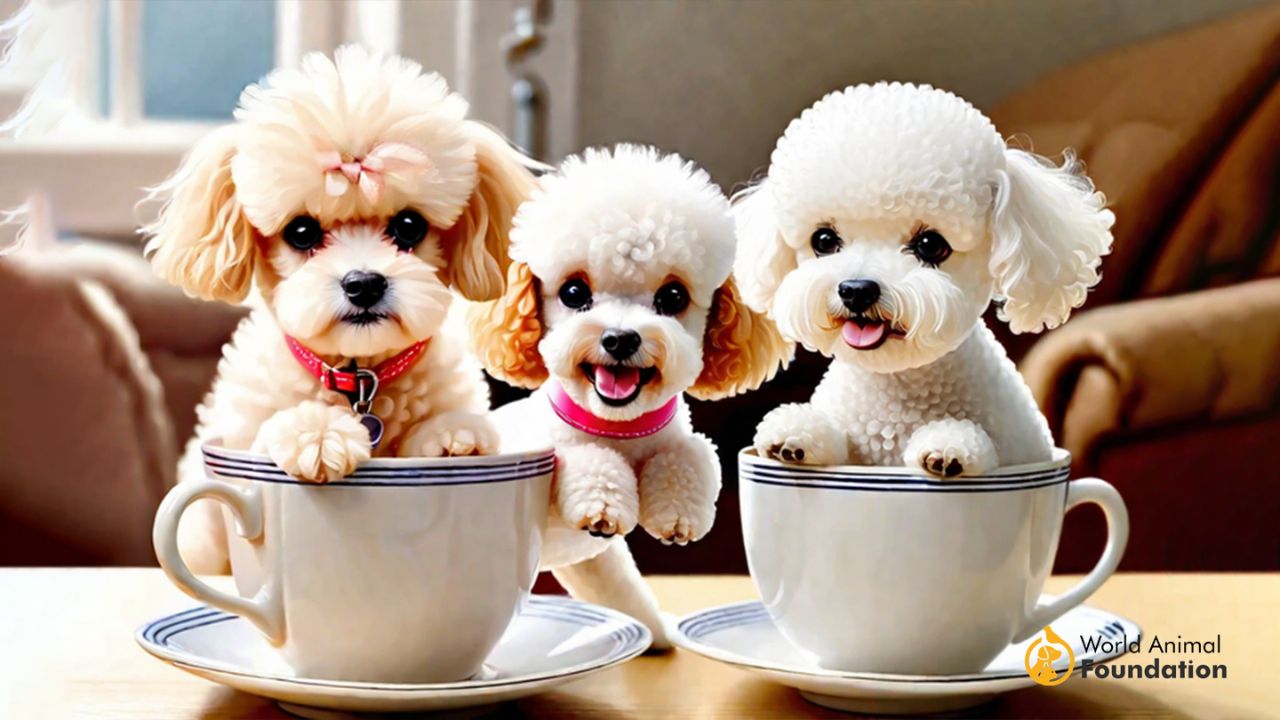Teacup dogs have become a popular pet choice in recent years. These dogs are miniature breeds that have been deliberately bred to be smaller than the average of their breed. And their name “teacup” comes from their size, as small as teacups! But before you bring a teacup dog in a teacup into your home, there are a few things you should know.
In this article, we will review everything you need to know about teacup dogs, including their history, health concerns, and what it takes to care for these tiny pups. Whether you’re considering getting a teacup dog or just curious about these miniature puppies, read more!
What Are Teacup Dogs?

Teacup dogs are often miniature versions of popular dog breeds, such as the Chihuahua, Pomeranian, or Yorkshire Terrier. They weigh no more than 4 pounds and are not acknowledged by the American Kennel Club as a distinct breed. (AKC). The AKC only recognizes the standard size of each breed, not the miniature versions.
Teacup dogs became popular in the 1990s and 2000s when celebrities started carrying them in designer purses. Some people see them as a status symbol, but these tiny dogs require as much care and attention as regular dogs.
Health Concerns
Teacup dogs have a shorter lifespan and are prone to several health problems due to their small size. One of the most significant risks is hypoglycemia, where their blood sugar levels can drop dangerously low if they don’t eat frequently. They also have a higher risk of heart problems, respiratory issues, and liver shunts.
Because of their fragile nature, teacup dogs are not recommended for families with young children as they can be unintentionally injured. They must also be handled carefully so they don’t jump or fall off furniture, which can cause significant injuries.
Care and Training
Although tiny, teacup dogs still require plenty of care and attention. They need daily exercise and playtime to keep them healthy and happy, and they also require frequent grooming to keep their long hair and coat looking good. Teacup dogs are also sensitive to extreme temperatures, so it’s essential to keep them warm in the winter and cool in the summer.
Like any other breed, they require socialization and training to prevent behavioral problems, such as excessive barking or aggression. It’s important to start training early, as training can be challenging once they have developed bad habits.
Finding a Reputable Breeder
If you’re considering getting a teacup dog, It’s critical to locate a trustworthy breeder who is concerned for the health and welfare of their dogs. Teacup dogs are frequently produced in puppy mills, where they are housed in cruel conditions and sold for a profit. As such, stay away from purchasing teacup dogs from pet stores or internet vendors.
You should be able to meet the puppy’s parents and receive information from a respectable breeder.a health certificate and vaccination records. They should also be willing to answer any questions and offer support even after you take your puppy home.
Health Concerns of Teacup Dogs in Teacups
Teacup dogs in teacups are prone to several health problems due to their small size. Some of the common health problems include hypoglycemia, heart problems, dental problems, and respiratory issues. These dogs have a fragile bone structure, which makes them more prone to injuries if not handled carefully. Because their small size makes them more susceptible to heatstroke and dehydration, they need to be kept in a cool and comfortable environment.
Temperament of Teacup Dogs in Teacups
Teacup dogs in teacups are typically friendly, affectionate, and loyal. They are known for their playful and lively personality and love to be around their owners all the time. These dogs are good with children and other pets, but their small size may not be suitable for families with young children who may accidentally hurt them. They also tend to be more vocal than other dogs, so they may not be suitable for apartments or shared living spaces.
Training and Care of Teacup Dogs in Teacups

Teacup dogs in teacups require special care and attention due to their small size. They need to be handled with care to prevent injuries, and they need a lot of socialization to prevent aggression and anxiety. These dogs need a balanced diet with nutrients to maintain their health. They also require regular grooming to keep their coat healthy and shiny. Training is also essential for them in teacups, and they respond well to positive reinforcement techniques.
Where to Get a Teacup Dog in a Teacup
If you’re interested in getting a teacup dog in a teacup, it’s important to research reputable breeders who specialize in breeding these dogs. It would help if you also considered adopting from a rescue or shelter, as many teacup dogs in teacups need loving homes. Before you bring a teacup dog in a teacup into your home, make sure you have the time, resources, and patience to provide them with the care they need.
Teacup Dogs: Introducing the Small Dog World
In the realm of canine companionship, teacup dogs have made a name for themselves and won people over with their charm dog enthusiasts with their miniature stature and endearing charm.
This piece aims to solve the puzzles surrounding these diminutive canine companions by addressing four key questions that often pique the curiosity of prospective pet owners.
How long do teacup dogs live?
One of the foremost inquiries prospective teacup dog owners pose revolves around the lifespan of these pint-sized pets. Generally, their encompass a variety of small breeds, such as Chihuahuas, Pomeranians, and Yorkshire Terriers, bred selectively for their diminutive size.
While the average lifespan of a teacup dog can differ based on elements like heredity care, and overall health, they typically live between 12 to 16 years. Owners must prioritize regular veterinary check-ups, a balanced diet, and a nurturing environment to ensure the longevity and well-being of their teacup companions.
Are teacup dogs calm?
The temperament of teacup dogs is a subject of much contemplation, especially considering their petite dimensions. Contrary to the belief that smaller dogs might be more prone to anxiousness or hyperactivity, teacup dogs, when properly trained and socialized, can exhibit calm and affectionate behavior.
Early socialization, training methods based on positive reinforcement, and a secure environment contribute significantly to fostering a calm and well-behaved teacup companion. Owners must invest time and effort in training to nurture a balanced and relaxed temperament in their thems.
How big do teacup dogs get?

The allure of teacup dogs lies in their tiny size, making them particularly appealing to those with limited living space or a preference for smaller pets. However, the size of it can vary depending on the specific breed. On average, their weigh between 2 to 5 pounds and stand around 6 to 9 inches tall.
Potential owners must research and choose a teacup breed that aligns with their lifestyle and living conditions. Additionally, responsible breeding practices play a pivotal role in determining the size and health of its, emphasizing the importance of obtaining these companions from reputable breeders.
Is a teacup dog and Pomeranian the same?
The distinction between teacup dogs and specific breeds, such as Pomeranians, often needs clarification among aspiring pet owners. It’s important to clarify that “teacup” is a term used to describe the size of a dog rather than a specific breed.
Conversely, Pomeranians are a distinct breed characterized by their fluffy double coat, fox-like expression, and lively demeanor. While teacup Pomeranians exist, not all Pomeranians fall under the teacup category.
In summary, the world of teacup dogs is a captivating realm, offering companionship in compact dimensions. Understanding their lifespan, temperament, size, and the distinction between it and specific breeds is crucial for prospective owners to embark on a fulfilling journey with these petite yet vibrant canine companions.
As with any pet, responsible ownership, proper care, and affectionate attention are the cornerstones of a happy and healthy life for it.
It may be small, cute, and captivating but they come with unique challenges and responsibilities. Before you bring one into your home, it’s crucial to understand their health concerns, care needs, and where to find a reputable breeder. With proper care and attention, a teacup dog can provide a devoted and caring companion for a long time.
FAQ
Can a dog be a teacup?
The only requirement for a dog to be considered a teacup is to weigh between two and five pounds and be less than 17 inches when fully grown, so “teacups” are much easier to find in the smallest breeds like Yorkshire Terrier, Maltese, Pomeranian, Pug, Shih Tzu, and Chihuahua. 1. Teacup Chihuahua 2. Teacup Maltese 3. Teacup Poodle
How are teacup dogs made?
“To create teacup dogs, breeders pair the so-called “runts” of the litters to make the smallest animal possible”, said Dr Cathy Meeks. To achieve a teacup dog, breeders try to mate the smallest dogs from a so-called “litter breed” with another small dog. Breeders tried many combinations until they achieved this desired size.
What is the smallest teacup dog breed?
The cup of tea At less than 5 inches tall and less than 6 pounds in weight, the Chihuahua is the smallest breed of teacup dog. Teacup Chihuahuas are small dogs with big personalities and a loving disposition toward people, despite their diminutive size.

